Motorsport
Embassy Hill
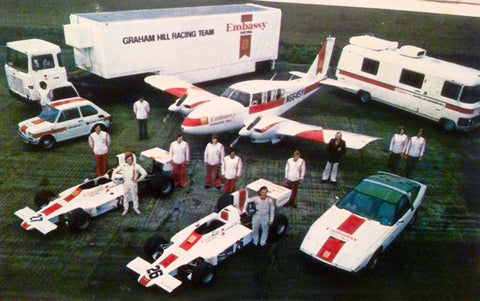
Rarely does a team disappear in one fell swoop – especially one with such potential and in such an unfair and cruel manner. One team in particular, was Graham Hill’s outfit - Embassy Hill Racing.
Now before we get all dewey eyed and rosy cheeked I need to point out first that as a Formula One team, Embassy Hill did not do particularly well in terms of results and were not seen as serious contender. However, they were just on the beginning of an upswing at the end of the 1975 season. It seemed apparent that they had the car, the driver and things were beginning to look positive.
We need to throw our minds back to 1972. An unsatisfied Graham Hill announced that he was leaving the Brabham team after a very unbrilliant two-year stint. However, at 43, the fat lady was well and truly singing and whichever way you look at it, Graham was knocking on a bit. Team bosses were not particularly excited about hiring a relic from yesteryear but Graham wasn’t having any of it. As the old saying goes “if you want something done properly, do it yourself”.
Graham announced that he was to start his own Grand Prix Team with himself as Owner, Team Manager and Driver. This all sounds very tally-ho and heroic but it was the only way that Graham could get a drive in 1973 and therefore stay in F1.
Astonishingly, particularly by modern F1 standards, Graham secured title sponsorship from the cigarette brand, Embassy. Seriously though – for a completely new team with no guarantees on performance or future, managed by a driver who is ‘over the hill’ (no pun intended), securing a big title sponsor was, and still is, a huge achievement.
Graham used his experience and contacts to great advantage, securing a supply of hearty Ford Cosworth V8 Engines but with the very average Shadow DN1 customer chassis. It all looked well on paper and he had trusted mechanics and engineers along for the ride.
Although it was not a ride at all. 1973 was a long, hard slog for Embassy Hill and I wonder if Graham ever thought that he might have bitten off more than he could chew by juggling all these roles he had within the team, not forgetting being also a Husband and Father. Their 1973 results were uninspiring however to their credit, they didn’t have as many DNF’s as other teams so there was some reliability – but the speed hadn’t bothered to show up.
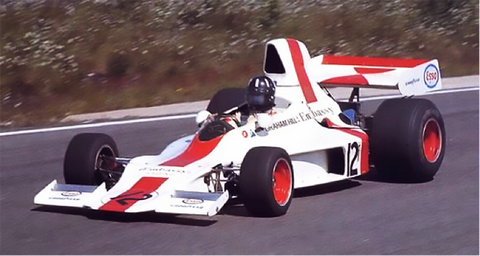
But as I am sure you will agree, the Embassy Hill cars looked fantastic. A sleek, clean white/red livery encapsulating a brutish example of a 1970’s F1 car. A time where speed, looks and handling were at the forefront of the mind whilst safety and economics were simply forgotten about. Come to think of it, it’s probably the other way around nowadays….
By their second season in 1974, Embassy Hill had hired a second driver in the form of Guy Edwards and commissioned Lola to build a new car for them after an unsuccessful run with Shadow’s customer chassis. Graham scored their first point during the 1974 Swedish Grand Prix but a number of DNQ’s and DNF’s started to affect the team. Times were hard and Graham was feeling the strain.
Whilst using the same car in 1975, a 45-year-old Graham reached rock bottom in his career and failed to qualify for that year’s Monaco Grand Prix and thus retired as a driver. Mr Monaco had failed to qualify and finally realised that the game was up.
But for Graham and the team, it was for the greater good as retirement from driving would allow him to focus on Management. I overheard an ex-F1 driver at Silverstone Classic say “Formula One is like a good buffet – it’s very difficult to know when to stop” and I think there is a lot of truth in that analogy and must have been very difficult for Graham.
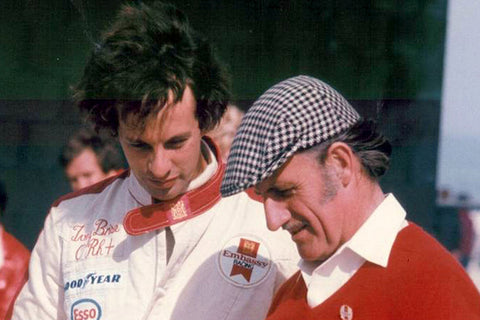
But like a lot of things, you have to take a step backwards to make a leap forwards. Graham immersed himself purely as a Team Manager, hired new staff to take over from his previous roles and also the young and promising British F3 driver, Tony Brise. Tony greatly impressed Graham and struck a chord with everyone after turning up to the garage saying “I’ve arrived, where’s my bloody car?”
Tony Brise was coming off the back of a very impressive few years in Formula 3 and was ready to make the step up to Formula One – so he declined a long term contract with a small, little known team called ‘Frank Williams Racing Cars’ for an opportunity to be part of Embassy Hill and absorb the wealth of experience and knowledge Graham had.
In only his ninth race, Brise qualified 6th ahead the likes of Messrs, Hunt, Reutemann, Peterson and Andretti – all 70’s F1 royalty. His engine would not last the race but his talent was definitely noticed. By this point, the team upgraded the Lola chassis, christened it the GH1 with the intention that Tony Brise could harass the frontrunners.

Finally, Graham had the driver he wanted and could retire comfortably knowing that Tony could easily take up the lead driver role. Tony scored a point at the 1975 Swedish Grand Prix, Embassy threw more money into the mix and things were looking up for the 1976 season.
Embassy Hill created their first scratch built, all-new chassis called the GH2 for the 1976 season. The car looked sleeker, less bulky and was much lighter. In the Autumn of 1975, Brise tested the GH2 car at Silverstone and later in Paul Ricard in France and was very encouraged by its performance. Everyone was optimistic about 1976.
Brise telexed the factory saying “Car now brilliant, test ended, see you all Monday morning” and later boarded Embassy Hill’s 6 seater Piper Aztec piloted by Graham along with team manager Ray Brimble, designer Andy Smallman and mechanics Terry Richards and Tony Alcock to fly back to Elstree airfield in the UK.
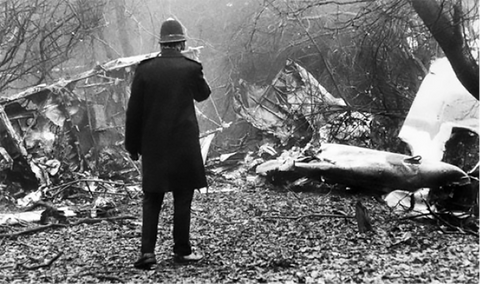
On that dark foggy night of 29th November 1975, the aircraft crashed on Arkley golf course after colliding with a line of trees, killing everybody on board.
Because of that cruel and unfair twist of fate, Embassy Hill was no more. In an instant, Formula One lost one of its greatest ever in Graham Hill and one of its greatest prospects in Tony Brise. We were deprived of what was looking to be, a very positive year for Embassy Hill - This was well and truly the ‘Munich Air Disaster’ of Formula One. The team was then closed indefinitely and assets sold off as the team now only consisted of three individuals and was impossible to continue.
Pole Positions? Race wins? Championships? Who knows - but it would have been nice if eventually a different white and red liveried team carved out a place for itself in the F1 record books.
Next time you are at the Silverstone Classic or Goodwood Revival, make sure you pay special attention to the beautiful looking, red and white Embassy Hill GH2 car that is maintained and kept running. Sure, it never took part in a Grand Prix but the GH2 holds a certain level of mystery that not many other cars do.
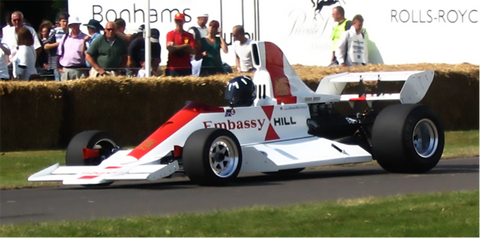



Was the airbox on the GH2 designed to be removed in view of the new rules due to come in from the 1976 Spanish Grand Prix
Hello all! Further to my previous e-mail, as soon as I have finished redecoration work on my house and completion of my outdoor workshop I’ll begin the 1/43rd scale Graham Hill/Embassy Racing diorama using an SMTS whitemetal LOLA T370 car kit, Graham Hill in racing gear with two racing driver figures (all Denizen Miniatures). I totally agree with Ronnie Wayne Mazur’s comment. Bring back Embassy Hill Racing!
I will also do a Monaco Diorama using 1/43rd scale Denizen Miniatures of Graham Hill waving to the crowds, followed by a young Embassy Racing Driver and a young Embassy Team girl alongside him, based on a strip of colour film featured in the ‘Driven’ Documentary.
Embassy should have continued to keep the Hill Team in f-1 racing.
Excellent article. I’m currently making a 1/43rd scale diorama of Embassy Hill Racing with a whitemetal kit of a 1974 LOLA T370 along with three figures, Graham Hill with a jacket next to the car whilst two new drivers arrive to take turns in driving the car (friend of mine and myself). My friend has already done a tribute diorama to the team members lost in the plane crash with the men checking the car whilst Graham Hill, with Tony Brise standing behind him, gives final instructions to a new driver (my friend). All the figures are old TAMIYA F1 models with some conversions.
It would be great to see copies of the GH2, kitted out with a HALO, being entered in today’s F1 with a reformed Embassy Hill Racing (how about Damon Hill being Team Manager? If he’s looking for drivers my friend and myself would like to volunteer). I prefer the classic cars to the current ones that look like a metal skeletal tube of toothpaste on wheels that’s been sat on one end by a pregnant elephant!
Many thanks again for the great article.
Best wishes,
Steve
(Collector of Graham Hill and Embassy Racing memorabilia)
Great article but omitted the teams best result, Alan Jones’ 5th place at the Ring.Also, ive a question-I know that in the initial stages of operation, the team was based in MauriceGomms works in Woking, but someone told me they moved from there-do you know if thats true, and if so where to? Im also trying to locate a film about the assembly of the Shadow that the team first ran, but dont know the title.